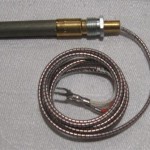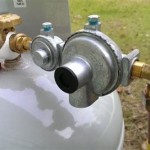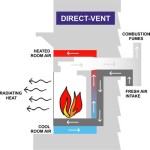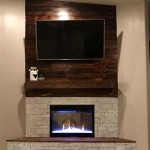Small Corner Wood Burning Fireplaces: A Space-Saving Hearth Solution
Wood-burning fireplaces have long been cherished for their warmth, ambiance, and the undeniable charm they bring to a home. However, traditional fireplaces can be bulky and require significant space, making them unsuitable for smaller dwellings or rooms with limited square footage. This is where small corner wood burning fireplaces offer a compelling solution, providing the benefits of a traditional fireplace in a compact and space-efficient design.
A corner wood burning fireplace is specifically designed to fit snugly into a corner of a room, maximizing floor space and creating a focal point without overwhelming the area. These fireplaces are available in a variety of styles, from traditional cast iron stoves to modern, sleek designs, allowing homeowners to find an option that complements their existing décor. The placement in a corner also offers unique design opportunities, allowing for creative integration with existing architectural features and furniture arrangements.
This article will explore the key features, benefits, and considerations associated with small corner wood burning fireplaces, providing a comprehensive overview for homeowners considering this space-saving heating and aesthetic enhancement solution.
Space Optimization and Design Flexibility
One of the primary advantages of a small corner wood burning fireplace is its ability to optimize space. Traditional fireplaces often demand a dedicated wall, which can be a significant constraint in smaller homes or rooms. By utilizing a corner, these fireplaces free up valuable wall space, allowing for more flexible furniture placement and overall room design. This is particularly beneficial in apartments, condos, or compact living rooms where space is at a premium.
Furthermore, corner fireplaces offer considerable design flexibility. They can be integrated into a variety of architectural styles, from rustic cabins to contemporary homes. The corner placement itself adds visual interest and can become a natural focal point in the room. Homeowners can further personalize the look by choosing from a range of materials, finishes, and design details. Options include traditional cast iron with intricate detailing, modern steel with clean lines, or even corner fireplace inserts designed to be housed within a custom-built surround made of brick, stone, or wood.
The strategic placement in a corner can also create a sense of intimacy and coziness within the space. The diagonal orientation often allows for a wider viewing angle of the fire, enhancing the ambiance and making it easier for multiple people to enjoy the warmth and visual appeal of the flames. This makes corner fireplaces ideal for creating a comfortable and inviting atmosphere in living rooms, dens, or even bedrooms.
Moreover, the corner location often simplifies the process of venting the fireplace. In many cases, the corner is adjacent to an exterior wall, making it easier and less expensive to install the necessary chimney or vent system. This can be a significant advantage, as the cost of venting can be a substantial factor in the overall cost of installing a wood-burning fireplace.
Heating Efficiency and Environmental Considerations
While aesthetics and space-saving are important considerations, the heating efficiency of a small corner wood burning fireplace is also crucial. Modern wood-burning fireplaces are designed to be more efficient and environmentally friendly than older models. They often incorporate features such as airtight construction, catalytic converters, and advanced combustion systems that burn wood more completely, reducing emissions and maximizing heat output.
When selecting a corner wood burning fireplace, it is important to consider its heating capacity, typically measured in BTUs (British Thermal Units). The appropriate BTU rating will depend on the size of the room you intend to heat and the level of insulation in your home. A fireplace that is too small may not provide adequate heat, while one that is too large could overheat the space and waste fuel.
Another factor to consider is the type of wood you will be burning. Hardwoods such as oak, maple, and ash produce more heat and burn longer than softwoods such as pine and fir. It is also essential to use seasoned wood, which has been properly dried to reduce moisture content. Burning wet or unseasoned wood can lead to creosote buildup in the chimney, increasing the risk of a chimney fire and reducing the efficiency of the fireplace.
Environmental considerations are also paramount. When choosing a wood-burning fireplace, look for models that meet or exceed EPA (Environmental Protection Agency) emission standards. These fireplaces are designed to burn wood more cleanly, reducing air pollution and minimizing the impact on the environment. In addition, consider using sustainable wood sources and practicing responsible burning habits to further reduce your environmental footprint.
Some modern corner wood burning fireplaces also offer features such as thermostatic controls and blowers, which can further enhance their heating efficiency. Thermostatic controls allow you to maintain a consistent temperature in the room, while blowers help to circulate warm air more effectively.
Installation Requirements and Safety Precautions
The installation of a small corner wood burning fireplace requires careful planning and adherence to building codes and safety regulations. It is highly recommended to consult with a qualified professional to ensure that the installation is done correctly and safely. Improper installation can lead to fire hazards, carbon monoxide poisoning, and other serious risks.
One of the first steps in the installation process is to determine the appropriate location for the fireplace and ensure that it meets all clearance requirements. The fireplace must be placed away from flammable materials such as curtains, furniture, and wall coverings. In addition, it must be installed on a non-combustible surface, such as concrete, brick, or stone.
A proper chimney or vent system is essential for safely venting the smoke and combustion gases from the fireplace. The chimney must be sized correctly and installed according to the manufacturer's instructions and local building codes. It is also important to have the chimney inspected and cleaned regularly to prevent creosote buildup and ensure proper draft.
Carbon monoxide detectors should be installed in the home to provide early warning of any carbon monoxide leaks. Carbon monoxide is a colorless, odorless gas that can be deadly. Regular maintenance of the fireplace and chimney is crucial to prevent carbon monoxide poisoning.
In addition to these safety precautions, it is important to follow safe burning practices. Never leave a fire unattended, and always use a fire screen to prevent sparks from escaping. Store firewood away from the fireplace to reduce the risk of fire. Dispose of ashes safely in a metal container with a tight-fitting lid.
Selecting the right corner wood burning fireplace involves careful consideration of factors such as size, style, heating capacity, efficiency, and safety features. By taking these factors into account and working with a qualified professional, homeowners can enjoy the warmth, ambiance, and charm of a wood-burning fireplace while optimizing space and ensuring safety.
Furthermore, consider the long-term maintenance required for a wood-burning fireplace. Regular chimney cleaning is essential to prevent creosote buildup, which can lead to chimney fires. The frequency of cleaning will depend on the amount of wood burned and the type of wood used. It's also important to regularly inspect the fireplace for any signs of damage or wear, such as cracks in the firebox or deterioration of the firebrick.
The choice of fuel is also critical. Using seasoned, dry wood is essential for efficient burning and reduced emissions. Avoid burning treated wood, painted wood, or garbage, as these can release harmful pollutants into the air. Consider investing in a moisture meter to ensure that your firewood is properly seasoned before burning it.
Beyond the functional aspects, think about how the fireplace will integrate with the overall design of the room. Consider the surrounding materials, such as the hearth, mantel, and wall coverings. Choose materials and finishes that complement the style of the fireplace and the rest of the room. The corner placement offers a unique opportunity to create a visually appealing focal point that enhances the ambiance of the space.
Finally, be aware of local regulations regarding wood-burning fireplaces. Some areas have restrictions on the type of fireplaces allowed, the amount of wood that can be burned, or the times of year when burning is permitted. Check with your local authorities to ensure that you are in compliance with all applicable regulations.
By carefully considering all of these factors, homeowners can make informed decisions about selecting, installing, and operating a small corner wood burning fireplace, ensuring a safe, efficient, and aesthetically pleasing addition to their home.

Corner Log Burner Ofen Wohimmer Kamin

Corner Log Burner Installation Four Marks Alton Hampshire

Wood Burning Fireplace 1 17 3 Hark Gmbh Co Kg Corner Traditional Closed Hearth

Sketch Of Corner Wood Burning Stove Functional And Interior Beautifier Stoves Living Room Log Burner

Wood Stoves For Small Spaces Warmth And Functionality Panadero

Nordpeis Quadro 1t Wood Burning Stoves House Of

25 Home Wood Burning Stove Ideas Digsdigs

Wood Stoves For Small Spaces Warmth And Functionality Panadero

20 Ideas To Decorate Around A Wood Burning Stove

Stovax Vogue Small T N E Stoves
Related Posts








